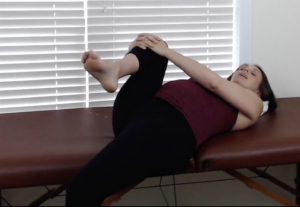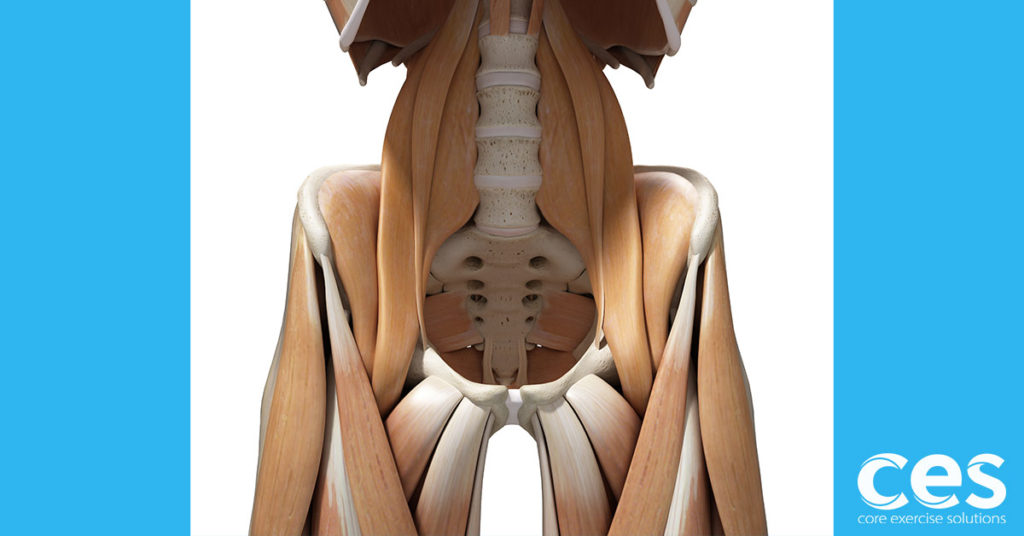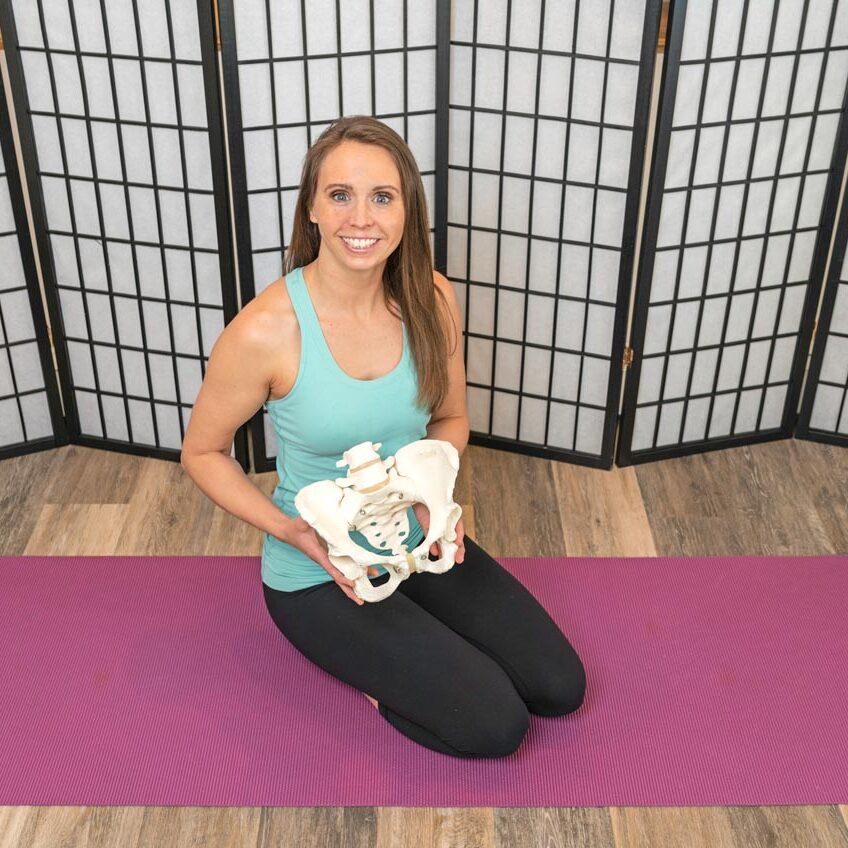There are 2 main types of tightness that I see in hip flexors.
#1. The muscles are short and tight.
#2. The muscles are actually long but feel tight. (Especially when you stand up.)
Both types are trying to tell you that something needs to change in your body and both types feel like tight hip flexors. If there is one thing I've learned about tight hip flexors over the years, they are the result not the cause of an issue. You need to find the underlying issue that's causing the tightness and fix that to get your hip flexors to let go. I'd love to help you with that!
The first type of tight hip flexor responds really well to a LITTLE stretching with a whole LOT of strengthening!
The second type does NOT respond well to stretching and lots of stretching can even create further issues. Not to say stretching can't create issues in tight-short hip flexors as well, but the likelihood is a little less.
How do you know which one you have or if you have tight hip flexors at all?
Tight hip flexors can feel tight in strange places.
- Low Back Ache or Tightness with Standing
Ever stand around at a party or shopping and your low back starts to ache? Yep, blame your hip flexors. But! It's not their fault. They are simply tightening down to try and support your core. That comes back to building core endurance and usually fixing an anterior pelvic tilt.
- Neck Tightness and Pain
It's not always related, but more times than not the clients I see with neck issues also have tight hip flexors. Once again, let's take a second to reflect on association, not causation. The same issue that's causing the tight hip flexors could be causing the neck issue or it could be due to the fact that the psoas pull on the spine which means it pulls on the neck. Either way, I've found that if I address tight hip flexors on someone with neck pain, it helps the neck pain!
- Hip Tightness, Pinching or Butt Pain
Obviously, there is a lot more going on with these than just tight hip flexors BUT in most of these cases, the hip flexors are tight.
- Trouble getting in a deep breath of air or feeling like your air goes all to your belly and makes your belly really stick out and expand.
Goes hand in hand with a tight psoas. (That's a main hip flexor muscle.) Same thing here, not the hip flexor's fault.
- Poor Posture and Trouble Standing Up Straight
They attach to your spine and pelvis, so hip flexors really affect standing posture.
How do you know if they are tight beyond feeling a tightness in the front of your hips or one of the issues I listed above? You can check them!
Lie diagonally on your back with your leg hanging off a bed. Hug the leg furthest from the edge into your chest (right leg for me). (I'm really pregnant in this pic so getting that knee in is a bit of an issue.)

Does your other leg hang down below the bed (left leg for me)? Does it feel tight in the front of your leg?
If it doesn't hang below the edge of the bed, your hip flexors are tight! By the way, this is a great way to get in a nice gentle stretch.
I'm not completely opposed to stretching, but I often see two things go wrong when people try to stretch out a tight area of the body.
1. They are too aggressive. A lunge position stretch for the hip flexors is actually quite hard and if you push the hip too far forward, you end up stretching more the front of the joint capsule than the muscle.
Why is this bad? Well, most people have laxity in the front of their capsule and tightness in the back. This prevents the femur from moving back in the capsule. Signs of a tight back capsule include:
- Not being able to comfortably sit in a full squat without falling over or having to turn your feet out
- Pelvic floor tightness in the back. (Deep butt pain, inability to control gas, leaking, painful sex, etc.
- Inability to squat with more upright posture. When doing a squat for exercise, you'll feel like you have to lean forward a lot.
- Deep butt pain with sitting or standing (piriformis pain/tightness)
- Labral tear
- Osteoarthritis in the front of the capsule
- Holding pelvis with glutes clench in a posterior tilt
- Overly lengthened hamstrings and resting in an anterior pelvic tilt
- More that I sure I'm not thinking of at the moment but will come back and add later... 🙂
2. They stretch but don't include enough strengthening in their routine. Did you ever notice how you have to keep stretching? If it was really working, the stretch would hold and you wouldn't feel the need to keep stretching. Strengthening helps the stretching hold! So, if you do stretch, be sure to strengthen. That will help your efforts have lasting results.
There was a study looking at labral tears in people that had no hip pain.
The study showed that 73% of the participants had a hip abnormality, with labral tears being identified in 69% of them.1
That's crazy!! None of these people had pain or knew they had a hip injury of any kind. It's studies like this that really question my thought process behind diagnostics. What if it's not the labral tear itself that's causing pain or even instability, but it's the way the person pushes into the tear that causes problems? The way they move their hip?
If the support structure for the hip is torn (and this is most likely in the front, if you're in western society) then shoving your femur too far forward into the socket would cause you to move into that torn spot, possibly provoking symptoms. Thus sending someone in to get imaging to find out what's causing their hip pain. Thus blaming their labral tear not their movement pattern. There are a lot of people that still have pain after labral repair surgery or even retear their labrum after surgery.
Whew, how did I get so far off from hip flexors?? LOL!
If I take it one more step forward and get their hip really moving back in the socket, wow, they really start to feel safe and their perpetual cycle of hip flexor tightness ends.
What if (too much Wild Kratts LOL), we looked more on how someone moves and why something might be tight instead of attacking the actual tight muscle to elicit change?
OK, so you see how I went full circle there? In other words, if you have a labral tear, don't panic, labral tears are common. And, if you have hip flexor tightness, think about doing a little more than stretching.
I have some awesome ideas for you on how to get the hip moving back in the socket and getting the hip to a happier place in a free mini-series. Just sign up below if you'd like that education. It's a 6 part series and we cover a lot of information!
The last thing I want to leave you with is that the hip is a big influencer of the pelvic floor. So, if you're dealing with pelvic floor issues that just don't seem to be getting better from kegels, please take a look at the hip! Getting the hip moving well in the socket can be the key to a great pelvic floor. It's time for you to dive into a bit more learning about the hip!
FREE 11 DAY
HAPPY HIPS CHALLENGE
6 videos over 11 days for women who want looser, stronger, happier hips. We cover tight hip flexors, piriformis pain, getting better glutes, and so much more!
This FREE challenge will give you all the tools you need to have hips that feel great, move freely, and help you stay active and pain-free.
Having trouble signing up? Click here


